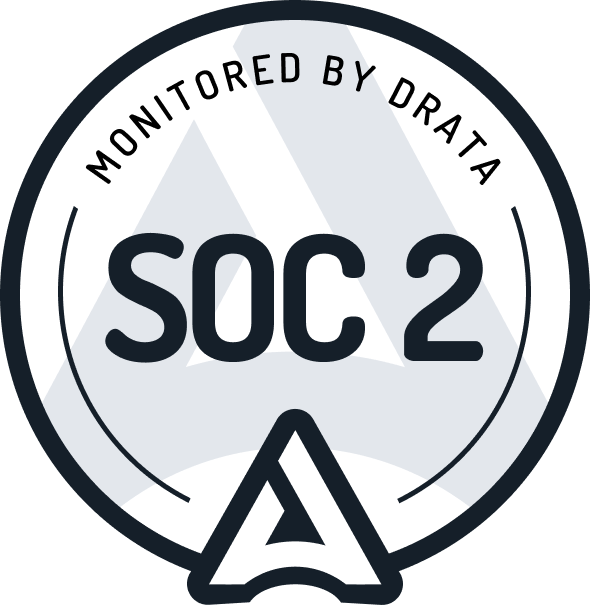What is stakeholder management?
10 Examples of Stakeholder Engagement Objectives & Results
We explore 10 popular stakeholder engagement objectives and give examples of OKRs for each of those objectives. Ideal for stakeholder engagement planning and evaluation.

One of the first steps in creating your stakeholder engagement plan or planning your consultation is to identify your objectives.
But it can also be useful to set OKRs to define your overall goals, regularly check on how you’re going, drive continual performance improvement, and report on your progress to stakeholders. They are especially valuable for consultations and projects that span 12 months or more.
What are OKRs (Objectives & Key Results)?OKRs are a management or goal-setting strategy, most often found in technology companies. Each objective focuses on something that needs to be changed, fixed, or improved. Then for each objective, you might find several key results or metrics that measure whether the objective has been achieved.The idea is that teams check in regularly (often on a quarterly basis) to define objectives and track their results. This helps team members stay engaged in their work and get better aligned with the company, with a clearer idea of what the organization is trying to achieve. |
Sometimes it’s tricky to know what’s possible with your stakeholder engagement — and what objectives or key results are likely to be the best fit. So, we’ve put together a list of 10 popular stakeholder engagement objectives (OKRs) with example metrics that might apply to your project and consultation.
1. Reach and Engage More Stakeholders
Reaching more people is a common objective for stakeholder engagement — in part, because this broad objective plays an important role in nearly every other goal. If you can reach more people (and, ideally, get their participation/trust/legitimacy), you’ll tap into more knowledge and more people and groups will be aware of your project’s importance (which will hopefully increase support). There are a number of ways you might measure your stakeholder reach.
Objective: Increase the number of stakeholders reached
Key results:
- As measured by the number of stakeholder contact records
- As measured by the number of stakeholder interactions or volume of dialogue
- As measured by the growth of your social media engagement and/or followers
- As measured by the number of email subscribers and/or emails opened or clicked
- As measured by how many people remain engaged for the long-term
- As measured by the number of attendees at key events or meetings
- As measured by interactions with key stakeholders (high influence/impact/interest)
2. Improve Sustainability
There are many ways to measure stakeholder engagement-driven sustainability, just as there are different types of sustainability — social, economic, and environmental. For instance, engaging and partnering with multiple stakeholders is essential for achieving the Sustainable Development Goals, so reaching more stakeholders or a more diverse group of stakeholders could indicate progress towards sustainability. If you have the data, you could also measure sustainability based on actual project outcomes or impacts, like improved gender representation, better access to education, or an increase in protected flora/fauna. The most appropriate key results or metrics will depend on your specific sustainability objectives.
Objective: Improve the sustainability of the project
Key results:
- As measured by the number and/or diversity of stakeholder contacts
- As measured by the number of highly impacted stakeholders engaging
- As measured by the number of endangered species found in the development area
3. Improve Community Wellbeing
Stakeholders and community members increasingly expect that organizations exist not just for profit, but also for social good. So, your organization or project could aim for a positive impact on its community or stakeholders. For instance, increasing social capital within a community (increasing the number and strength of connections between community members) is one way to improve a community’s wellbeing and resilience. Of course, there are other indicators of improved community wellbeing and a positive community impact, like local jobs, satisfaction, and involvement.
Objective: Increase wellbeing of community members
Key results:
- As measured by an increase in stakeholder relationships mapped
- As measured by the number of introductions made via the project or organization
- As measured by survey responses indicating overall happiness, health, wellbeing, and sense of belonging
- As measured by community members saying that they like where they live
- As measured by the number of community members participating in engagement activities
- As measured by the number of community members involved in voting, volunteer groups, or neighborhood activities
- As measured by project outcomes that directly contribute to community wellbeing, connectedness, or independence (e.g. a new road leading to improved access to facilities, local jobs, less travel time, etc.)
4. Increase Accountability
Accountability is a good objective for stakeholder engagement because it can lead to better outcomes for all. It means that stakeholders are participating in the consultation and that their input is being used in the decision-making progress. Accountability in stakeholder engagement requires organizations to demonstrate evidence of the participation and how it impacted outcomes.
Objective: Increase the accountability of our organization or project
Key results:
- As measured by the number of stakeholders receiving information on the project
- As measured by the number of stakeholders contributing feedback or ideas towards the project
- As measured by the types of stakeholders participating (and whether all groups are represented fairly)
- As measured by stakeholder awareness and understanding of the project
- As measured by the consistency and type of communication sent to stakeholders (consultation reports, updates, budget reports, etc.)
- As measured by stakeholders’ expressed trust in the organization or sense of fairness in the consultation process
5. Support Human Rights
Human rights can be a useful objective for stakeholder engagement — not just because it’s an obligation or responsibility, but because increasingly, organizations are expected to show evidence of their actions. So, consider which human rights issues apply to your project or organization and how you can best measure and report on your progress.
Objective: Ensure the organization meets the relevant human rights obligations
Key results:
- As measured by participation from relevant stakeholders (consulting on human rights issues)
- As measured by the portion of right-holders that have been informed of their rights and provided with opportunities to share their views
- As measured by the endorsement or support of stakeholders impacted by human rights issues
- As measured by specific project outcomes that positively impact human rights to life and liberty, freedom from slavery and torture, freedom of opinion and expression, work and education, and more
Read more on this topic inside our book on Human Rights, Risks & Obligations.
6. Increase Support
According to some, the overall objective of engaging with stakeholders and allowing for a more transparent decision-making process is to get greater input from stakeholders (and greater support on decisions).
While we don’t necessarily agree that this should be the main objective of stakeholder engagement, many organizations can improve social acceptance and support through the engagement process. Often, the engagement process itself can help to increase support through building better relationships, regular communication, mutual understanding, and providing opportunities to participate (which may lead to buy-in).
Objective: Increase overall stakeholder support for the project
Key results:
- As measured by the overall change in sentiment from stakeholder communications (Simply Stakeholders does this using an AI-powered analysis tool)
- As measured by positive stakeholder feedback or surveys (e.g. Likert scale)
- As measured by stakeholder agreement with the organization’s perspectives or approach
- As measured by the number of new referrals from existing stakeholders
- As measured by stakeholders indicating their expectations were met
- As measured by stakeholders expressing social acceptance of the organization
7. Identify and Reduce Risk
By engaging with stakeholders, you can help to identify potential risks much earlier on — and in some cases, even manage those risks. This can come from better understanding who your stakeholders are (and their influence/interest in the project), finding out more information from stakeholders (which may include risks you weren’t previously aware of), and building better relationships with stakeholders so that they’re less likely to delay or oppose your project.
Objective: Identify and manage risks to the project
Key results:
- As measured by the number of stakeholder responses
- As measured by the variety of information sources used to identify risk
- As measured by the number and strength of stakeholder relationships
- As measured by the sentiment/support of stakeholders (especially those considered to be high risk or highly influential)
8. Improve Efficiency
Efficient stakeholder engagement is a worthwhile objective — you want to make sure you’re getting the most out of your time and resources because that usually means you can engage with more people, or spend more time engaging one-on-one with key stakeholders. And that can allow you to be more effective, too. Of course, one of the best ways to improve efficiency is to use stakeholder software instead of a CRM or spreadsheet. This not only allows you to automate a lot of manual processes and get more value from your data, but also to measure your efficiency based on the data.
Objective: Consult with stakeholders more efficiently
Key results:
- As measured by the number of stakeholder interactions per team member
- As measured by the number of responses to stakeholder emails, comments, or grievances
- As measured by the adoption of stakeholder software and associated time savings compared to alternatives
- As measured by the number of stakeholders engaged per week/month/quarter
- As measured by the number of one-on-one meetings or phone calls with stakeholders
9. Improve Accessibility
Accessibility objectives are common, and not just because being accessible is a nice thing to do. Accessibility means that more people can participate in your engagement, which means you can tap into knowledge and perspectives from a broader group of stakeholders. Barriers to engagement could be due to physical or mental disability, difficulty with location/timing, or digital literacy. So, indicators for success in this area could be focused on offering a broader range of options to engage, ensuring that these options are being utilized, and that you’re getting engagement from a more diverse group of stakeholders.
Objective: Reduce barriers to engaging with stakeholders by improving accessibility
Key results:
- As measured by the number of accessible options provided
- As measured by the level of engagement of disabled stakeholders (compared to non-disabled stakeholders)
- As measured by the use of accessibility measures
- As measured by the diversity of participants (older, younger, employed, retired, etc.)
- As measured by stakeholder satisfaction with the engagement or consultation process
10. Better-Informed Decisions
One of the primary reasons to engage with your stakeholders is that it enables you to tap into a greater variety of perspectives, experiences, and broader knowledge base — which you can use to better-inform your decisions. Measuring whether you’ve met this objective can be tricky, but indicators for success include a greater number of stakeholders (and therefore perspectives), a larger volume of feedback (and therefore, more knowledge), and evidence that the engagement is actually being applied in the decision-making process.
Objective: Ensure that decisions are made based on the best available information
Key results:
- As measured by the number of stakeholders engaged (and/or types of stakeholders)
- As measured by the number of comments
- As measured by the number of survey completions
- As measured by evidence of the volume/quality of stakeholder input influencing each decision
- As measured by the number of times stakeholder plans and reports are being opened and/or referenced
Learn More
Want to learn more about stakeholder engagement or evaluation? Check out these related resources:
Evaluating Stakeholder Engagement and Public Consultation [eBook]
Principles of Good Stakeholder Engagement [Blog]
Best Community Engagement Strategies in 2023 [Blog]





